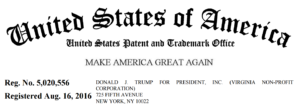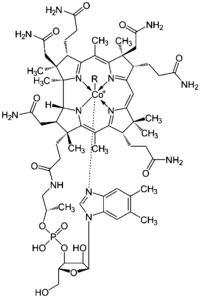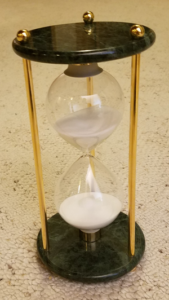There is a fundamental problem with customer numbers at the USPTO. It is the problem of trying to fit six pounds of nails into a five-pound bag. The nails don’t fit and the bag gets holes in it.
The original purpose of customer numbers was to provide an easy way to tell the USPTO where to send patent correspondence. The idea being that if a firm had an address change you would only have to update the address once (in the customer number record) and this change would then automatically take effect for all patent files that were associated with that customer number. This was like 24 years ago. Nowadays this is called the “correspondence address” customer number.
Then the USPTO grafted a third limb onto the Frankenstein. The customer number would also be used to keep track of where the maintenance fee branch should mail reminders about unpaid maintenance fees. This is called the “fee address” customer number.
Then the USPTO grafted a fourth limb onto the Frankenstein. The customer number would also be used to define the recognized power of attorney. The idea with this is that the client grants power of attorney not to any particular practitioners but instead to “the practitioners associated with customer number X”. The idea was that if a new practitioner were to join a firm, there would be no need to round up another signature from the client granting power of attorney to the new practitioner. Instead someone would add that new practitioner’s registration number to the customer number, and the client would automatically now be granting power of attorney to that new practitioner. Or if a departing practitioner were to depart from a firm, there would be no need to round up another signature from the client revoking power of attorney to the departing practitioner. Instead someone would delete that new practitioner’s registration number from the customer number, and the client would automatically now no longer be granting power of attorney to that departing practitioner. This is called the “power of attorney” customer number.
So at any given instant a file at the USPTO might have three distinct customer numbers — the CA (correspondence address) CN (customer number), the FA (fee address) CN, and the POA CN. Nothing about USPTO’s computer systems required that these customer numbers be the same. At OPLF we have files where none of the three customer numbers matches either of the other two customer numbers.
Then the USPTO grafted a fifth limb onto the Frankenstein. The USPTO developed Private PAIR, which lets people see stuff that the general public cannot see. How would the USPTO figure out who is permitted to see a particular (otherwise secret) file? The user-friendly thing would be to permit the customer to pick who could see the file and who could not. This could be an “access list” of users each with his or her own password. The “access list” approach could, for example, permit a client to see the file even if the client did not have any registered practitioners on the payroll. But that is not the choice that the USPTO made. The USPTO chose to tie it to a customer number.
Having chosen to use a customer number as the way of determining who would and would not be permitted to see a file, which customer number would USPTO use for this purpose? The POA CN? The CA CN? The FA CN? Or would USPTO add a fourth field to its database, the “PAIR customer number”?
I would have imagined the correct choice to be the POA customer number. If the client trusts someone enough to give them power of attorney, then it makes sense they would get to see an otherwise secret file.
But I imagined wrong. USPTO picked the CA CN as the customer number that would determine who gets to see the file and who does not.
Next USPTO found a sixth limb to graft onto the Frankenstein. USPTO decided to try to migrate away from postal mail as a way to mail stuff to applicants, such as Office Actions, Filing Receipts, and Notices of Allowance. USPTO wanted to simply send an email to the applicant, listing the files in which there was outgoing correspondence. This so-called “Outgoing Correspondence Notification” or OCN would be emailed to whom, exactly? Should USPTO let the applicant (or practitioner) pick what email address or email addresses would be used?
The choice USPTO made was to say that going forward, a customer number would contain not only a list of practitioners, not only a postal mailing address, but also a list of up to three email addresses. And then when the time came for USPTO to send out an OCN by email, USPTO would look to see what is the CA customer number, and then would look to see what are the email addresses for that customer number, and would then send the OCN to those email addresses.
Let’s step back a little bit and ask ourselves how this six-limbed Frankenstein works in practice.
As a first example, consider that every particular CN by definition contains a postal mailing address. But if a particular CN is used for POA purposes, it does not matter at all what exact postal mailing address that is. The postal mailing address in that CN could contain typographical errors or bigger mistakes and it would have no consequence. It would likewise not matter what email addresses were inside that CN, and whether they were spelled correctly or not.
As a second example, consider that every particular CN by definition contains a list of patent practitioners. But if a particular CN is used for CA or FA purposes, it does not matter at all who is in the practitioner list. The practitioner list in that CN could contain random practitioner numbers or only practitioner numbers of deceased practitioners, and it would have no consequence.
There is the story of the frog in the cooking pot that keeps getting hotter, but only slowly hotter, and so the frog never gets the idea to hop out of the pot. Here it is of course understandable that the USPTO could have ended up with the six-armed Frankenstein. Each grafting of another arm onto the Frankenstein is like making the cooking pot just a little hotter.
At some point USPTO needs to hop out of the pot. USPTO needs to get a fresh start on how it accomplishes a variety of things that don’t really need to be linked with each other:
- where does USPTO mail correspondence?
- who gets to see the file in Private PAIR?
- who has Power of Attorney?
- where should OCNs be sent?
A fresh start would permit selective access to a file, so that for example a client could see their file even though they don’t have a practitioner on the payroll. A fresh start would permit setting it up so that the inventor could see the file. A fresh start would permit role-based selective access, for example so that the client can “look but not touch” while the practitioner can look and also make changes. A fresh start would squarely recognize that not every person at a patent firm (or corporate patent department) is registered to practice before the USPTO. (As things stand now, the USPTO does not really do a good job of accommodating the secretary or paralegal who might have a legitimate reason to log in to Private PAIR.)
 ces of Allowance.
ces of Allowance.



